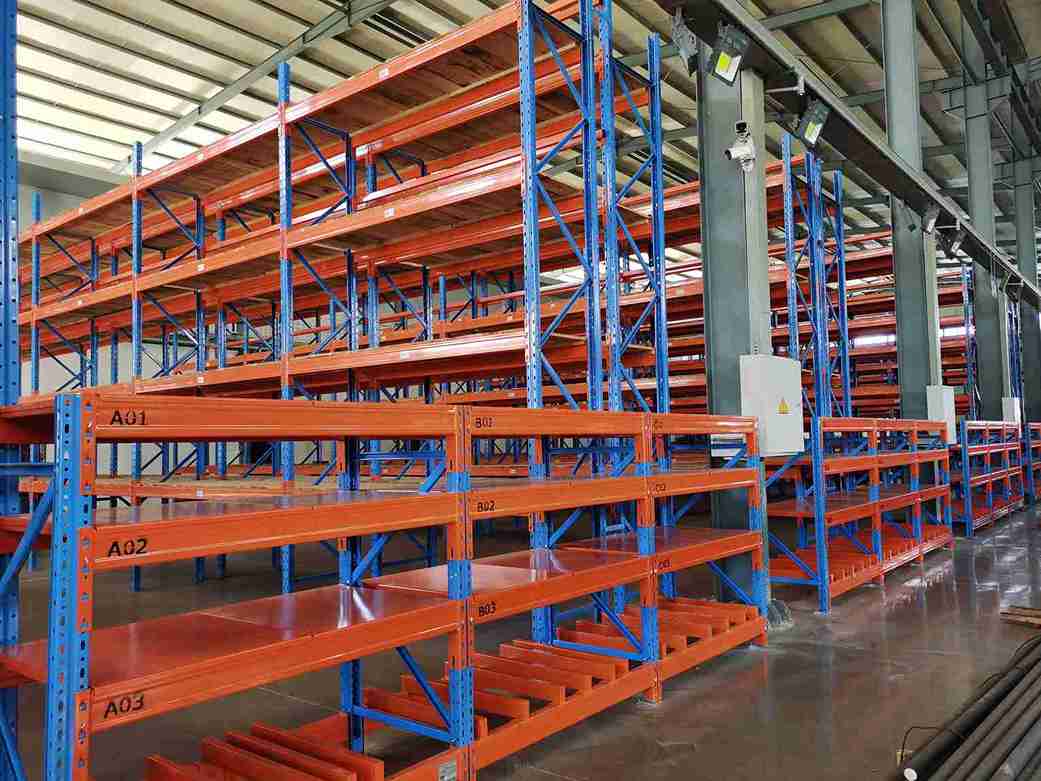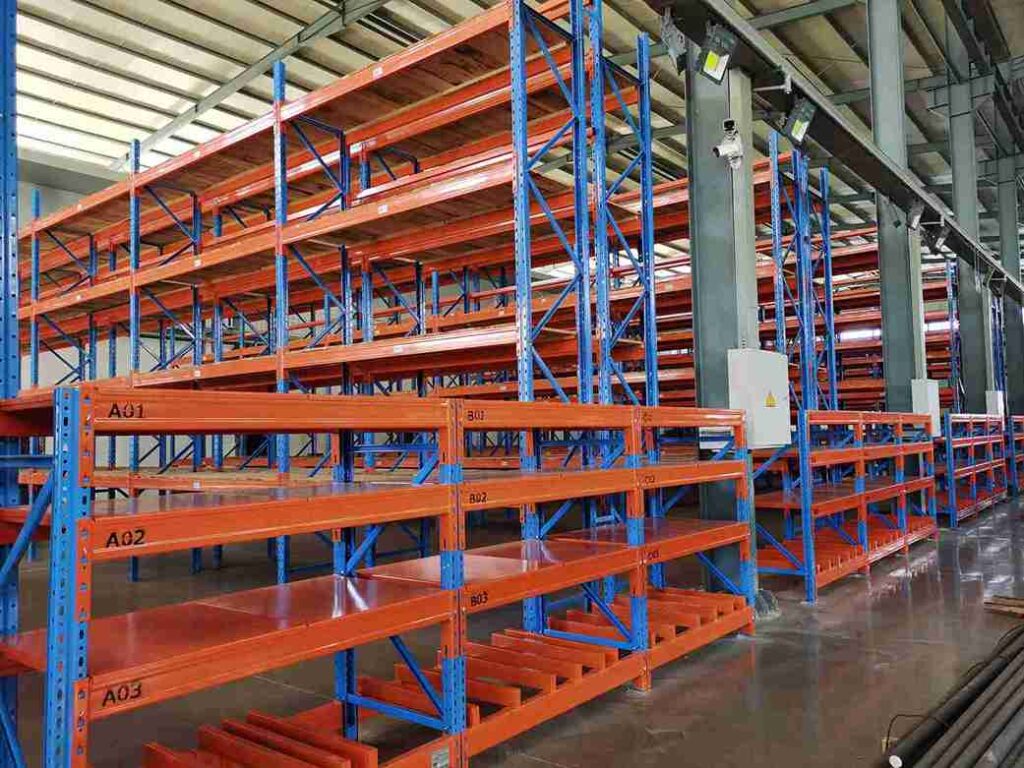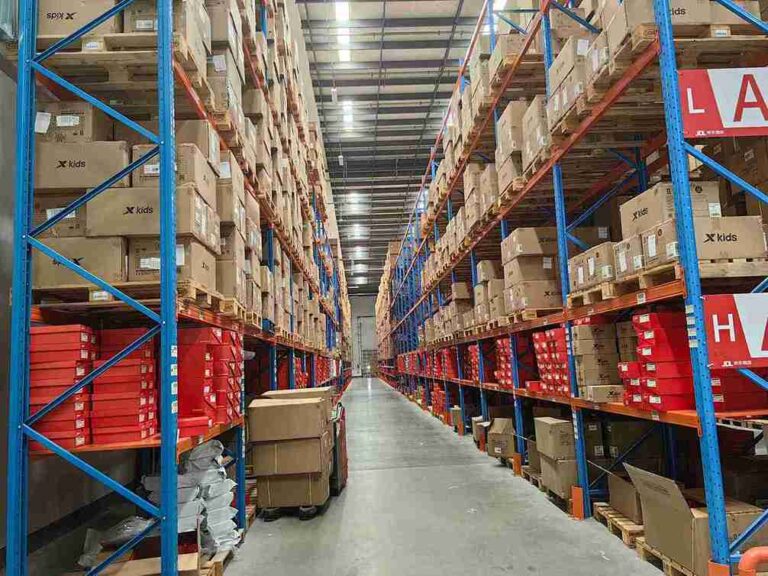📐 "First 50 Enterprise Queries Get Custom 3D Warehouse Design" Plan

In the competitive world of warehousing and logistics, industrial racking shelves are the foundation of an organized, high-performing storage system. Businesses that fail to optimize their storage solutions often face inefficiencies, wasted space, and rising operational costs. Custom industrial racking shelves provide a tailored approach to warehouse storage, ensuring maximum space utilization, improved workflow, and seamless integration with automation technologies like AGVs and AS/RS.
For companies looking to enhance warehouse efficiency, investing in the right industrial racking shelves is a strategic decision. This guide explores the benefits, types, selection criteria, and optimization strategies for industrial racking shelves, helping businesses make informed choices that drive long-term productivity.

1.The Critical Role of Industrial Racking Shelves in Modern Warehousing
1.1. Why Standard Shelving Falls Short
Generic shelving units often fail to meet the demands of high-capacity warehouses. Unlike custom industrial racking shelves, off-the-shelf solutions lack:
Adjustable configurations for varying load sizes
High weight-bearing capacity for heavy pallets
Compatibility with automation systems like robotic forklifts
1.2. How Industrial Racking Shelves Improve Efficiency
A well-designed industrial racking system directly impacts:
Order fulfillment speed – Faster picking and reduced travel time
Inventory accuracy – Organized storage minimizes errors
Safety compliance – Engineered to meet OSHA and FEM standards
(Example case study: A 3PL provider increased storage capacity by 40% after switching to custom industrial racking shelves.)
2. Storage System Varieties for Diverse Requirements
2.1. Versatile Pallet Storage Systems
Optimal for: Facilities with extensive product ranges
Primary benefit: Unrestricted pallet accessibility
Capacity specifications: Supports up to 3,000 kg per level
2.2. High-Density Storage Configurations
Ideal applications: Temperature-controlled environments, bulk commodities
Operational methodology: Direct forklift access design
Space efficiency: Delivers 75% greater density than standard systems
2.3. Dynamic Storage Solutions
Operational principle: Gravity-fed pallet movement
Industry applications: Fast-moving consumer goods sectors
3. Critical Selection Criteria
3.1. Facility Spatial Considerations
Aisle width optimization
Vertical space utilization
3.2. Structural Requirements
Material specifications for heavy loads
Seismic reinforcement needs
3.3. Automation Compatibility
Robotic equipment integration
System adaptability features
4. Advanced Optimization Techniques
4.1. Combined Storage Approaches
Integration of multiple system types for varied inventory needs
4.2. Intelligent Warehouse Systems
Real-time monitoring technologies
Automated retrieval mechanisms
5.The Value of a Professional Warehouse Audit
Before investing in industrial racking shelves, a free warehouse audit helps:
Identify wasted vertical space
Calculate ROI of different racking systems
Ensure compliance with safety regulations
(Strong CTA: “Schedule your free warehouse audit today to optimize your storage!”)
Conclusion
For businesses seeking to maximize warehouse efficiency, industrial racking shelves are not just storage solutions—they are strategic assets. By selecting the right racking system, companies can reduce costs, improve safety, and scale operations seamlessly.
A custom-designed industrial racking system, backed by expert consultation, ensures long-term productivity gains.
Ready to transform your storage efficiency? Contact us for a free warehouse assessment.
FAQs
1. How much weight can industrial racking shelves support?
Depending on design, industrial racking shelves can hold 1,000 kg to 5,000 kg per level.
2. Can existing racks be reinforced for heavier loads?
Yes, structural reinforcements can upgrade older industrial racking shelves for increased capacity.
3. What’s the lead time for custom racking installations?
Typically 4-8 weeks, depending on system complexity and facility size.
4. Are industrial racking shelves compatible with all forklifts?
Most industrial racking shelves work with standard forklifts, but narrow-aisle designs may require specialized equipment.
5. How often should racking systems be inspected?
OSHA recommends annual inspections, with more frequent checks in high-traffic warehouses.
Welcome to contact us, if you need warehouse rack CAD drawings. We can provide you with warehouse rack planning and design for free. Our email address is: jili@geelyracks.com




